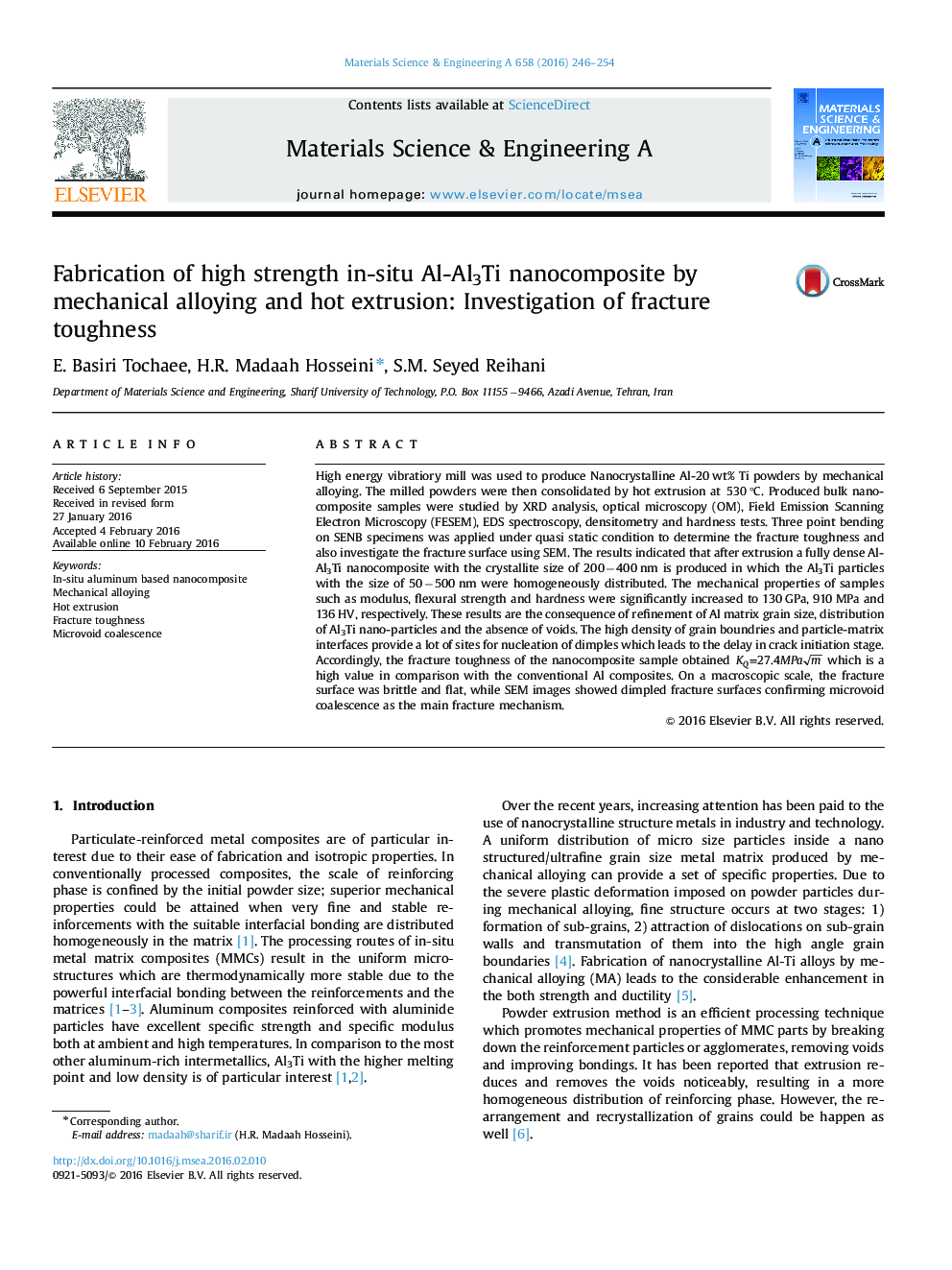| Article ID | Journal | Published Year | Pages | File Type |
|---|---|---|---|---|
| 1573632 | Materials Science and Engineering: A | 2016 | 9 Pages |
Abstract
High energy vibratiory mill was used to produce Nanocrystalline Al-20 wt% Ti powders by mechanical alloying. The milled powders were then consolidated by hot extrusion at 530°C. Produced bulk nanocomposite samples were studied by XRD analysis, optical microscopy (OM), Field Emission Scanning Electron Microscopy (FESEM), EDS spectroscopy, densitometry and hardness tests. Three point bending on SENB specimens was applied under quasi static condition to determine the fracture toughness and also investigate the fracture surface using SEM. The results indicated that after extrusion a fully dense Al-Al3Ti nanocomposite with the crystallite size of 200â400 nm is produced in which the Al3Ti particles with the size of 50â500 nm were homogeneously distributed. The mechanical properties of samples such as modulus, flexural strength and hardness were significantly increased to 130 GPa, 910 MPa and 136 HV, respectively. These results are the consequence of refinement of Al matrix grain size, distribution of Al3Ti nano-particles and the absence of voids. The high density of grain boundries and particle-matrix interfaces provide a lot of sites for nucleation of dimples which leads to the delay in crack initiation stage. Accordingly, the fracture toughness of the nanocomposite sample obtained KQ=27.4MPam which is a high value in comparison with the conventional Al composites. On a macroscopic scale, the fracture surface was brittle and flat, while SEM images showed dimpled fracture surfaces confirming microvoid coalescence as the main fracture mechanism.
Related Topics
Physical Sciences and Engineering
Materials Science
Materials Science (General)
Authors
E. Basiri Tochaee, H.R. Madaah Hosseini, S.M. Seyed Reihani,
